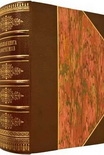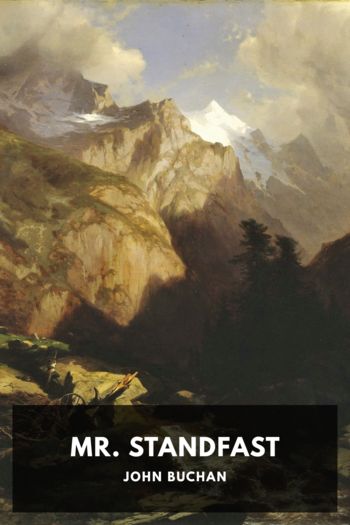Coconut Chaos, Diana Souhami [leveled readers TXT] 📗

- Author: Diana Souhami
Book online «Coconut Chaos, Diana Souhami [leveled readers TXT] 📗». Author Diana Souhami
The account of these killings seemed like some Old Testament chapter of judgement and nemesis. It scarcely seems credible. It was written up retrospectively in the Pitcairn Island Register of Births, Marriages and Remarkable Family Events. The record might have been a decoy. It was half-corroborated, half-contradicted by Teehuteatuaonoa (Jenny), when she eventually returned to Tahiti, and by John Adams.
The given story was that the four remaining Polynesian men: Teimua, Niau, Manarii, and Titahiti, were then treated even more brutally by the mutineers, particularly by McCoy and Quintal. They were beaten and literally had salt rubbed into their wounds.
On 3 October 1793, while the women were in the woods searching for eggs, and the Englishmen were tending the plots of land they’d appropriated for themselves, the Polynesians got hold of guns. They shot John Williams as he was putting up a fence, shot Christian in the back and smashed his head with an axe as he dug his garden, and shot John Mills as he tried to run away. He reached his house but they broke into it and beat him to death. Teehuteatuaonoa described the carnage:
They now went to Martin’s house and shot him: he did not fall immediately, but ran to Brown’s house which was not far off. He was there shot a second time. When he fell they beat him on the head with a hammer until he was quite dead. Brown at the same time was knocked on the head with stones and left for dead. As the murderers were going away he rose up and ran. One of them pursued and overtook him. He begged hard for mercy, or that they would not kill him until he had seen his wife. They promised they would spare his life; however one with a musket got behind him and shot him dead.
McCoy was shot at but escaped and hid in the woods. Quintal heard the shooting and hid there too. Adams was shot through his right shoulder – the bullet came out through his neck. He was then beaten with the butt of the gun and his finger was broken as he covered his face. He ran off and further shots at him missed. Edward Young stayed in his house.
For a week after these murders there were four mutineers, four Polynesian men and eleven women. Young gave his partner Teraura to Teimua and moved into Christian’s house with both Faahotu, who’d been with John Williams, and Christian’s erstwhile partner Mauatua, who’d just given birth to a daughter Mary.
Manarii then killed Teimua. As revenge the women hounded him into the woods where Quintal and McCoy, whom he’d tried to kill, were hiding. They throttled him. Young then shot Naiu, and one of the women chopped off Titahiti’s head with an axe while he was asleep.
By the end of the third year of colonising Pitcairn the only men left were Young, Adams, McCoy and Quintal. All were mutineers and serial killers. The women and children were then divided among them: four women went to Young, three to Adams, and two each to McCoy and Quintal. Whoever compiled the Pitcairn Register for 1793 kept it brief: ‘Massacre of part of the mutineers by the Tahitians. The Tahiti men all killed, partly by jealousies among themselves, the others by the remaining Englishmen. Mary Christian born.’
30
The Pandora reached Matavai Bay on 23 March 1791. Tahitians paddled out to the ship and for the desired reward of nails gave Captain Edwards information about the Bounty and its crew. Thirteen of its men were still on Tahiti. The master-at-arms Charles Churchill had been murdered by the seaman Matthew Thompson and, as revenge, Churchill’s Tahitian friends had then killed Thompson and sacrificed his body to the gods. Fletcher Christian and eight others were long gone with the ship but nobody knew where or, if they did, they weren’t saying. Edwards disabused them about Bligh being with Captain Cook on Whytootackee.
Joseph Coleman, the armourer, anxious to show his innocence, swam out to the Pandora. He wanted to return to England and be acquitted of any involvement in mutiny. Peter Heywood willingly went out to the ship too. From them Edwards quickly learned the whereabouts of the other wanted men on Tahiti. Some had fled to the mountains and a group had sailed to another part of the island in a thirty-foot schooner called the Resolution, beautifully built by the boatswain’s mate James Morrison. His resolve had been to sail it to Timor, then sell it to pay for his passage to England. Edwards commandeered it as a tender to the Pandora.
All the men were rounded up and treated as pirates. Edwards was indifferent to the pleas of innocence from those who said they’d opposed the mutiny and those who tried to explain that Bligh’s boat was so overcrowded they had no option but to remain on board the Bounty. As he saw it, it was for an English court to acquit them, or not. He had a supply of chains and handcuffs and the armourer made more. Each prisoner was given a shirt, trousers and a hammock, then manacled, put in leg irons and guarded by the Pandora crew with pistols and bayonets. They were told they’d be shot if they spoke to the Tahitians or to each other in Tahitian. The manacles were so tightly locked their wrists and ankles swelled.
Edwards had a structure built on the ship’s quarterdeck to contain them. It was round like a funnel and the prisoners called it Pandora’s Box. It was eleven feet long and the entrance was through an eighteen-inch-square scuttle at the top, secured by a bolt. There was an iron grate for air. No crew member was to speak to the prisoners except the master-at-arms about their provisions. The heat and stench of the place were intense and it became infested with maggots and vermin.
On 8





Comments (0)